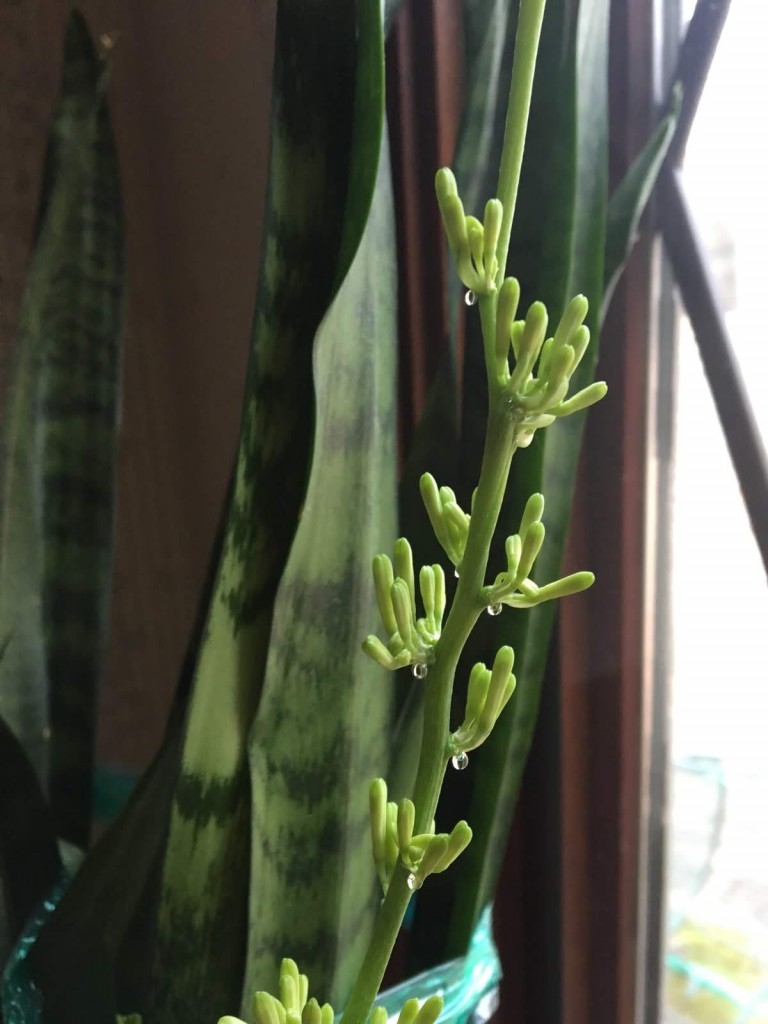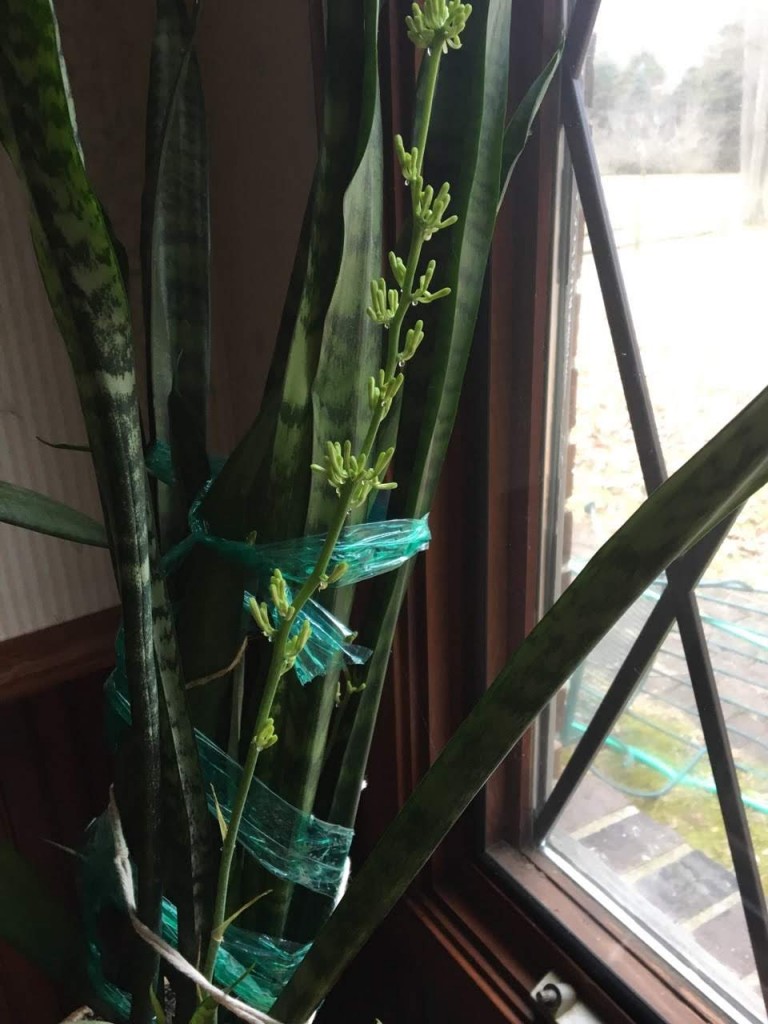Most of us are familiar with Mother-in-law’s tongue plant also called snake plant. It’s found in homes, offices, shops, workplaces and any other place that needs a tough and hardy indoor plant.
Until 2017 it was officially called Sansevieria trifasciata. Subsequent scientific study has now found it to be a Dracaena species so it’s official name is now Dracaena trifasciata.
Its main task is to sit in one spot, often for years at a time, adding living greenery without causing any fuss or needing any special care.
Snake plants prefer low humidity which is easy to find in most heated buildings. They easily adapt to low light conditions and will just sit there minding their business without either growing or dying back. Under conditions like that, the best thing you can do for it is to leave it alone, especially when it comes to watering. A widely spaced watering interval is much better than regular watering.
Dracaena trifasciata can help clean the air in your home or workspace. I remember back in the 1970’s reading about this plant. NASA was making plans for space travel and were looking for ways to improve air quality inside of spaceships during long voyages. They found out that snake plants not only provided some oxygen but were also very efficient at filtering airborne chemical pollutants.

PHOTO/caption: Drops of water oozing from plants is called “guttation”. It’s a natural process caused by the plant attempting to remove excess moisture. In this case the owner decided to help the flowering snake plant by giving it extra water.
Snake plants hardly ever produce flowers in our part of the world. I can’t remember the last time I saw one flowering, until this week. A few days ago someone sent me a photo of their snake plant with a flower stalk.
Only a small percentage of old, mature plants will produce flowers. When it happens, it’s a real treat to see. This is the time of year when it most likely happens.
Growing wild in their home in Africa, Dracaena trifasciata flower regularly and produce seeds, will this one? I’ll have to get back to you on that.
I’m not sure if you can actually encourage a Dracaena trifasciata to blossom but keeping your plant root bound in an undersized pot and keeping watering to a minimum may increase the odds of it happening.
Bob
